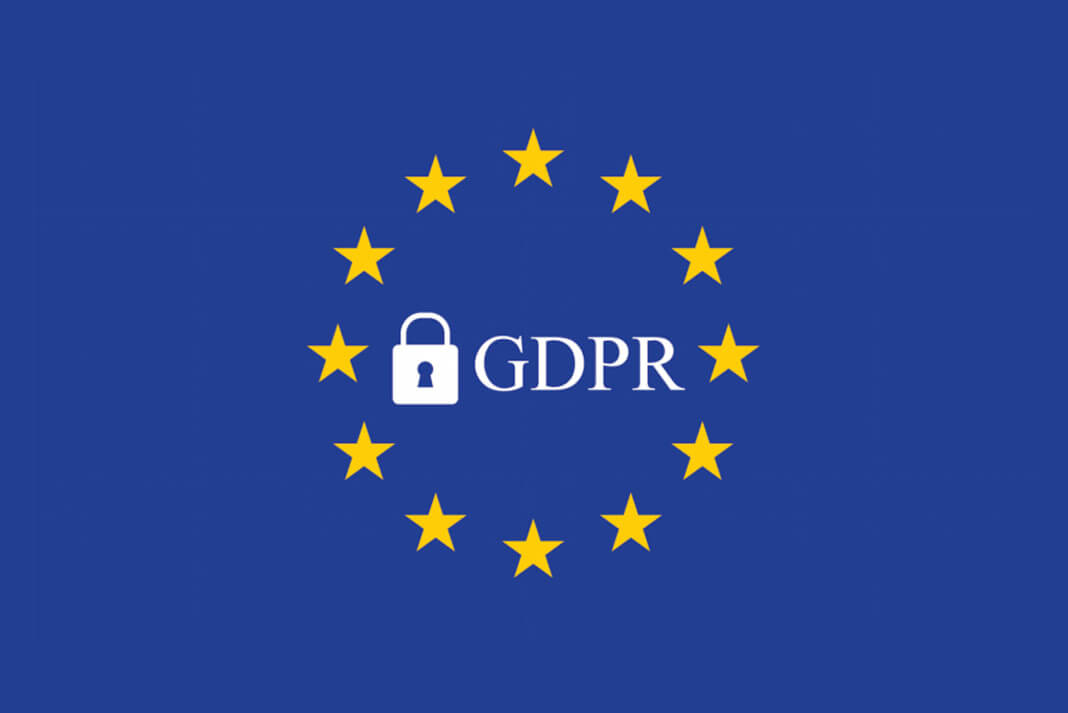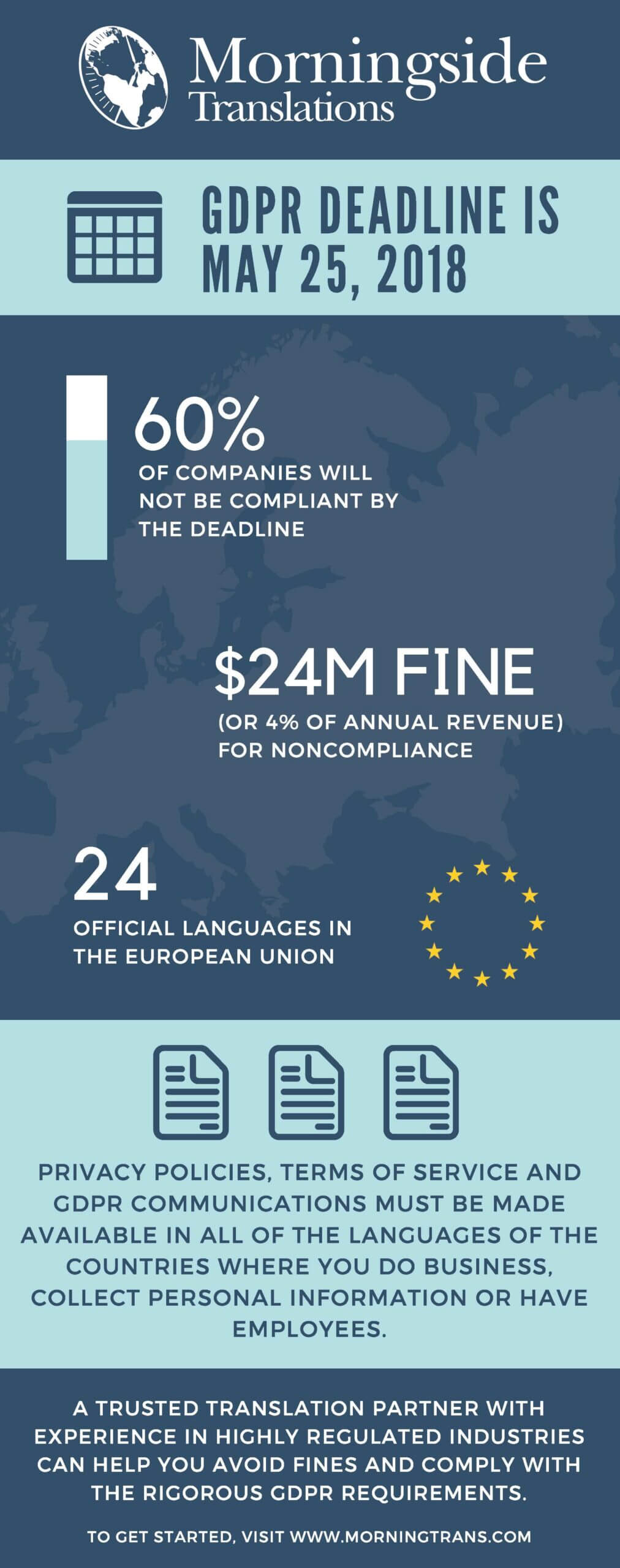Year: 2018
Hacks for Finding Foreign Languages in Your eDiscovery Data

A New Morningside Translations Article Featured on the Relativity Blog.
Relativity is the most popular eDiscovery platform for lawyers and legal professionals. We recently published a blog on Relativity’s website highlighting three important tricks to quickly identify critical foreign language information. Check it out below.
You are an eDiscovery professional at a big law firm. You sit down at your desk, log into Relativity, and start sifting through documents. You’re cruising right along, finding exactly what you need and you’re even ahead of your deadline. You start to think about lunch. Should I get a $15 salad from the place across the street? Should I just get pizza? Get pizza, you deserve it. Get a whole pie. You’re doing great.
Then you come across a huge cache of foreign-looking documents. You think they’re in Romanian, but you don’t actually know Romanian. You also don’t know Latvian, Lithuanian, or Polish. Could it be one of those? A bead of sweat forms on your brow and you start to panic, running through your options in a mental catalog:
- To ask one of the partners what to do, turn to page 17
- To go down a 13-hour internet rabbit hole, turn to page 25
- To run to the parking lot to cry in your car, turn to page 33
Don’t love those options? Luckily, there are a few helpful hacks that can save you a ton of time and frustration after you stumble upon foreign language documents halfway through your review—or, even better, prevent this heart-sinking moment and find them at the outset.
Identifying foreign languages as early as possible in your review process is critical to achieve clear, predictable costs, prevent unnecessary delays, and construct a workflow that makes sense. Here are several easy tricks to help you navigate foreign eDiscovery waters.
#1: Use foreign language stop words
If you don’t have Relativity Analytics, or if you’re looking for a quick and easy way to scan your data set for a certain foreign language, then a creative use of stop words in a dtSearch might help.
Stop words, also called noise words, are the most frequently used words in a given language (for example, in English: and, the, my, all, for). They are typically filtered out of a dtSearch or keyword search, as they tend to be so common that they don’t return valuable search results. However, their frequency also makes them a great way to find foreign language documents.
Because it’s safe to assume that stop words can be found in just about any piece of text, a dtSearch for a list of stop words will likely return any documents in the foreign language. If, for example, you believe your data set may contain German, then a search for German stop words will hopefully return any documents with German text.
Note that each language has its own unique set of stop words, so rather than translate a list of English words, it’s best to obtain a list of stop words in the desired foreign language from a legal language services expert.
#2: Run language identification
While the stop words hack gets the job done, it requires that you have an idea of which languages are in your data set and proves tedious if you want to search for more than one language. Full language identification analysis is preferable for data sets that may contain multiple languages, or if you simply want to double check for any foreign languages before moving forward with your review.
Language identification uses machine learning to detect the languages in a piece of text automatically. A feature in Relativity Analytics, it returns the primary and up to two secondary languages in a document, along with the percentage breakdown of each language.
From here, you can leverage the language identification output to guide your next steps; build dashboards to achieve a birds’ eye overview of the number of documents, custodians, and control numbers by language; batch documents by language so they can be sent to foreign language reviewers efficiently; and then send any documents with foreign language text for machine translation so you can review the gist in English. No matter which approach you take, language identification results lay the groundwork for the rest of your review workflow.
#3: Recognize that the internet is your friend—except for when it’s not
The beauty of the internet is that you can find almost anything you’re looking for with the click of a button. A simple Google search of stop words in your suspected language will net you some quick and reliable returns. Searching “Spanish stop words,” for example, points you to a comprehensive list of stop words in over 40 languages. The internet is pretty great, am I right? But don’t let it give you a false sense of security.
We’re all aware of the free translation tools out there. You might think that simply copying and pasting from your documents into one of these free engines might be your ticket out of this language identification mess, but before you go down that road there are a few important issues to consider:
- Copying and pasting is extremely tedious when you consider the volume of documents you’re likely dealing with. “Ctrl+C, Ctrl+V” isn’t really a feasible option when confronted with hundreds or thousands of documents.
- Free online translation tools are not secure. Once you input text into one of these tools, that text is their property as well. In most cases, you’re dealing with sensitive documents that shouldn’t be exposed to third parties. But, of course, you already know that.
Choosing one of the hacks above rather than a free online translation tool is a surefire way to keep your data secure and allow your team the time they need to focus on building a killer case.
So you found foreign language documents. Now what?
Now it’s time to determine whether those foreign language documents are relevant, privileged, or something else—in other words, to figure out what they say. To do that, you’ll likely want to partner with a trusted language service provider. Choosing a reliable provider is a topic for another day, but here are a few quick tips to get started:
- Make sure they have ISO-certified quality — Bad translations can cause confusion and cost you time and money. Defend yourself against them. Choosing a provider certified by the International Organization for Standardization is a good start.
- Make sure they have extensive experience in eDiscovery — Most often, a combination of tools—such as machine translation, foreign language review, and keyword search term translation—will optimize your time and costs, so make sure your provider is familiar with all of them and how they apply to these types of projects.
- Make sure they are familiar with your chosen technology — Selecting a partner who is already comfortable in your eDiscovery software can save time, boost security, and prevent headaches. Some may even have a dedicated application for your platform, like Morningside’s Relativity plugin, providing dedicated support inside the tool you already know.
With these simple workflow hacks, you have some better options to choose your own eDiscovery translation adventure. Have you used any of them before? Let us know in the comments.
 Dylan Blaney
Dylan Blaney
Vice President of Business Development Morningside, a Questel Company
Dylan Blaney is responsible for the company’s global legal translation strategy and maintaining relationships with the world’s largest corporate legal departments and law firms. Dylan expertly advises law firms and corporations on best legal translation practices, specifically implementing workflows and technology that reduce cost, improve quality, and accelerate deadlines. He specifically focuses on international litigation and arbitration, FCPA, patent litigation, M&A, internal corporate communication and documentation, and any other material that needs to be translated to ensure adequate global communication in the legal marketplace.
Get the latest insights delivered to your inbox
Patent Embodiment: Why Multiple Are So Helpful

“Patent embodiment is the description of the production, use, practice, or expression of an invention in the patent application.” according to the UpCounsel. Imagine this: ‘Company A’ owns a patent for an energy-efficient lawnmower. ‘Company B’ starts manufacturing a lawnmower that looks eerily similar. When ‘Company A’ finds out, it sends a cease and desist letter. ‘Company B’ fights back, saying its product is not infringing. They go to court, where a deciding authority — a judge, examiner or board — delves into ‘Company A’s’ patent claims to determine what legally constitutes infringing activity.
The claims’ language is at the core of this decision: If it is solid and transparent, then the semantic investigation will probably work out in favor of ‘Company A,’ the patent owner. If the patent claims are vague, ‘Company B’ could win the case.
How to protect yourself
To avoid being on the losing end of such a judgment, IP applicants should consider listing multiple embodiments on their patent applications. The Oxford Dictionary defines an embodiment as “representing or expressing something in a tangible or visible form.” On a patent application, an embodiment is a detailed description of how an invention can be made or used. It’s not enough to assume that this is obvious or implied – it must be explicitly stated to take advantage of maximum protection.
For example, if there are multiple methods of making an invention or if it is an invention that has (or could have) various uses, the patent applicant should list every possible embodiment they can imagine in the specification. Doing so makes it less likely that an infringer will later be able to exploit vagueness in the issued patent.
Global Patent Filing
Remember Companies A and B above? Now that you understand how critical patent semantics can be, one of the most important steps you can take when filing for protection in multiple countries is to ensure that you have translated every embodiment accurately. You want there to be as little interpretive “wiggle room” as possible should IP litigation occur.
IP litigation can be particularly challenging when a determination is to be made by a judge, examiner or board that is familiar with a different IP system, language and culture from your own. An LSP specializing in international patent filing can ensure that every application you file is translated accurately and appropriately.
Case Study: Purdue vs. Alvogen
In the case Purdue Pharma LP vs. Alvogen Pine Brook LLC, one point of contention clearly illustrates the importance of thoroughly listing multiple embodiments. Here’s what happened:
- Purdue Pharma owned US Patent No. 9,750,703 for “encased tamper-resistant controlled release dosage forms.”
- Purdue Pharma used this technology to create Butrans, a prescription medication used to “treat pain that continues around the clock.” Butrans comes in the form of a patch that contains an extended-release opioid absorbed through the skin over seven days.
- While Butrans was still patent-protected, Alvogen, another life science company, started marketing a generic version of the extended-release pain medication.
- Purdue Pharma claimed Alvogen’s generic version infringed upon Patent No. 9,750,703.
- The case went to the Delaware District Court, where Purdue won.
A closer look at Patent No. 9,750,703
In discussing a time-release shell for a pharmaceutical, the following phrase in Patent No. 9,750,703 became critical to Purdue’s win: “A layer encasing the core and comprising a second portion of hydrocodone bitartrate dispersed in a second matrix material.” At issue was the meaning of “layer encasing the core.” Did the patent refer to, and protect only a single-material layer, as Alvogen asserted? If so, it couldn’t apply to a shell made up of multiple materials, as their product did.
Ultimately, the court concluded after reviewing the following embodiment regarding different ways Purdue’s shell could be constructed: “The shell of the dosage form can be formed, e.g., by compression coating, molding, spraying one or more layers onto the core, dipping one or more layers onto the core or a combination thereof.” The court sided with Purdue and concluded that the term ‘layer encasing the core’ means “one or more materials enclosing a space or surrounding the core.”
The takeaway here is that because Purdue’s application was farsighted enough to include these multiple embodiments — i.e., the various ways in which their shell could be created — they were able to prevail in the infringement suit against Alvogen.
Invaluable patent embodiment: How multiple patent embodiments are especially crucial with global patents
If you plan to protect your patents in multiple countries, the last place you want to find yourself is in a legal dispute in front of a foreign authority who has to read between your lines. Working with an LSP that can anticipate potential local unclarities can, ultimately, make a huge difference. By knowing each region’s IP system, being fluent in the local language, and understanding the cultural lens through which the details in your filing may one day be viewed, the right LSP can help ensure your IP protection is rock-solid uncontestable.
Get the latest insights delivered to your inbox
Understanding the Impact of AI and Big Data on the Language Industry

In today’s data-driven world, the technology sector is abuzz with the potential of Artificial Intelligence (AI) and the power of Big Data. It’s exciting, futuristic stuff, and offers all sorts of new opportunities for a variety of services, including language service providers (LSPs).
How big is Big Data?
When we talk about Big Data, we mean big data — 2.5 quintillion bytes of data are added to the world’s digital repositories every day. In 2015, roughly 7.9 zettabytes were collected (1 zettabyte = 1 trillion gigabytes), and we’re expected to reach 176 zettabytes by 2025.
All of this data creates huge sets of structured and unstructured digital information that comes from pretty much everywhere. For example, big data sets can include your past sales data, online buyer reviews, real-time streaming, scientific experiments, government censuses, and pretty much anything else you can think of.
What do we get from AI and Big Data?
At its purest level, artificial intelligence is the product of thinking that is done by computer software. For now, practical use of AI is found chiefly in programs that utilize machine learning and deep learning – both of which use algorithms to parse data and then make intelligent decisions (and even build new neural networks) based on what was learned.
Big Data is about analysis, or as The ATA Chronicle puts it, “taking large amounts of data and using software tools to identify previously undiscovered patterns, trends, correlations, and associations.”
For LSPs, one benefit of applying AI learning to Big Data could be early identification of changing industry trends – which could result in better advanced planning for customers’ changing needs.
Consumer benefits
Some experts believe AI’s benefits will result in more people being able to take advantage of translation and localization services as they become more affordable. The hope, ultimately, is that more companies, organizations, and individuals will be able to converse with others throughout the world.
The historical model these experts cite is the clothing industry, where the upheaval of industrialization eventually revolutionized the industry by increasing the speed of production and lowering its cost, enabling an explosive increase in the sales of lower-cost goods.
Are we there yet?
The short answer is “no,” though some, such as VentureBeat, predict AI will mature pretty quickly and be a formidable force in translations by 2024. For now, though, human intervention in translations, especially regulated translations, is absolutely mandatory.
In fact, a man vs. machine competition demonstrated just that in South Korea last year. In this competition, four human translators were each given a different piece of content (under 250 words) to translate. They each had 50 minutes to complete the work while three AI translation programs (Naver’s Papago, Google Translate and Systran) were simultaneously assigned the same four jobs. Competition scoring was based on accuracy, language expression, logic and organization. Despite the fact that each one of the AI programs beat the human translators in turnaround time, it was still a worst-case scenario for AI.
“Some 90 percent of the artificial intelligence programs’ translations had grammatical errors,” said Kwak Jung-chul, president of the Korean Association of Translators and Interpreters. “The programs failed to understand the message that writers were trying to convey.”
The future of AI in language services
Experts have been weighing in on what we can expect as AI use grows in modern business. One especially interesting area to look at is web robots (also called chatbots or just bots). You’ve probably come across one of these while shopping on Amazon, surfing Facebook or working inside a Microsoft platform – and chances are you will only see more of them as time goes on.
Customer service chatbots are, according to Forbes, “[an] evolving technology [that] makes it easier for businesses to engage their customers, cut down on their workload and proactively prevent minor customer service issues from becoming major problems.” The value of a customer service bot, however, depends entirely on the quality of the automated script on which the bot runs. High quality scripts in multiple languages can result in higher customer satisfaction as well as the opportunity to obtain new business from different markets.
Push to pull translation
Andrew Joscelyne, writing for the Globalization and Localization Association (GALA), points out another interesting trend that could have a major influence on the future of the translation industry. He calls the shift “push to pull translation.”
Here’s what that means: Traditionally, companies have doled out (pushed) information that they consider to be important – and only translated it into the languages they’ve deemed profitable. This is the “push” side of the equation – the company chooses the type of information to distribute and the language/s to distribute it in. However, as online audiences grow, they may want to “pull” information (including languages) that companies don’t yet offer.
For example, a growing company might receive requests for business in 30 different languages – but it only has translators for 3 of those languages. That’s a major loss of potential business! Big Data can help companies look at users’ digital profiles, geolocations and personalized habits to help determine which additional languages and information could increase business the most.
Challenges and opportunities
It’s clear, then, that AI and Big Data stand to transform language services and are already beginning to do so. Once LSPs learn to leverage the wisdom buried in Big Data and begin to take advantage of more advanced AI, all of us will be able to communicate more freely with other people in other places.
For now, however, human translators continue to be a necessity in the fields of business, law, life sciences and intellectual property. In these regulated industries, quality simply can’t be sacrificed for convenience.
Get the latest insights delivered to your inbox
8 Tips for Communicating with Your Global Workforce

Communicating with your global workforce is crucial for employers who want to keep their employees motivated. Creating a sense of belonging through a shared mission – with regular communications – is critical for employee satisfaction. It can go a long way towards promoting productivity and increasing employee engagement. For multinationals, it’s vital to devise a strategy for communicating with your global workforce to ensure connectivity across locations and cultures. This helps produce a consistent on-brand internal voice and project the company image you want your employees to have. Follow these eight tips to ensure you communicate with your global workforce as effectively as possible.
1. Define your mission and goals
A comprehensive corporate communications strategy can’t be effective without a defined mission statement. If you don’t already have one, take some time to write up the mission of your company, firm or organization. Clearly explain what you’re about and state some short and long-term goals. Then, think about what you need to achieve those goals, measure progress, and how an effective communications strategy can help you. For example, do you want to encourage teamwork? Gratitude? A little healthy competition? The more specific you can be about your goals, and the more you can quantify them, the easier it will be to measure success and failure down the road.
2. Know your audience
Familiarize yourself with the culture of each foreign office, and communicate with employees in a way that respects their culture. A straightforward example is the holiday season: not everyone celebrates the same holidays simultaneously. Instead of sending a generic “Merry Christmas” greeting to all company offices, send holiday-appropriate cards to overseas employees for Ramadan, Rosh Hashanah, or Chinese New Year.
3. Mobile accessibility
More people view content on their phones than on desktop computers in today’s world. Corporate communications should be designed to work optimally on mobile platforms – especially if your organization has remote workers or employees who are often traveling on business. To ensure an optimal mobile viewing experience, ensure your content is responsive and let your employees know about any relevant mobile apps they need to download for proper viewing (e.g., Outlook, Salesforce, etc.).
4. Snackable bites go down easy
Try to write and send snackable content: “short, sweet, and extremely filling,” per branding and marketing agency The Halo Group. One great way to accomplish this is via infographics. Why? Because research shows that 65% of people learn better visually and tend to process images up to 60,000 times faster than text. As such, corporate communications have the potential to be a form of marketing the company to itself, also known as ‘internal marketing.’ This means you should invest in making your internal resources as visually pleasing as possible. Think like a marketer and try using bright, colorful and professional-looking graphics. Tip: Check out these tools for assistance in creating awesome infographics, and here is an article on the psychology of colors when marketing.
5. Keep it simple
Don’t waste employees’ time with company-wide communications that no one cares about. Make sure every communication is relevant and targeted to your audience. Employees will probably welcome insights about how the business is doing overall and specific company goals. Reporting industry trends and competitors can help employees place their efforts within a larger context. Of course, you’ll also want to announce any special events you’re planning, such as seminars, professional development opportunities or social gatherings. Talk to team leaders to see if they’d like the chance to regularly update the rest of the company on their department’s activities and accomplishments. Bottom line: In a multi-site company, put an extra premium on identifying content that interests all of your employees, not just those who work out of HQ.
6. Call to action
Where possible, implement calls to action in your communications. Asking an employee to do something — ideally something easy — helps get them invested in the content. For example, when you post a new blog, share the link internally and ask your employees to like or share it on social media if it speaks to them. Suppose there is an introductory seminar or update to company policy. In that case, a survey or quiz is a great way to engage employees and ensure that they review and understand the new rules or policy.
7. Speak their language
Work with a Language Service Provider to ensure that employees in all offices understand your communications, especially critical communications like updates to the employee handbook. Translating important employee communications is legally required in many countries. An LSP can also help assess the appropriateness of text, images and colors for different cultures. Sending out culturally appropriate content in your employees’ local languages will ensure compliance with local language laws and make everyone feel valued and included in the company culture.
8. Communication is a two-way street
If an employee responds to your communication, you need to have a quick mechanism to respond quickly. Employee feedback can be a fantastic way to identify unseen opportunities for collaboration between teams or sites, strengthen company unity and spot issues brewing below the surface. It would be best if you also considered setting up a way for employees to provide feedback anonymously. You can address anonymous comments or suggestions during internal global calls or internal all-office emails.
About Us
Morningside equips the world’s leading corporations with a full suite of end-to-end translation and localization solutions for their corporate compliance needs. Our language services ensure your ideas and policies are seamlessly communicated to your employees, partners, and customers and meet all local and cultural requirements.
Get the latest insights delivered to your inbox
How to Use Emails to Improve Customer Experience and Engagement

As more companies expand their international presence, one of their biggest challenges is developing and maintaining sustainable engagement with overseas customers. The days of personal customer interaction at a retail level are long gone, and worldwide live phone support is prohibitively expensive for all but a handful of companies. Social media is a helpful way to stay in touch and market your products and services, but it’s not a secure option for confidential or sensitive information. This leaves email as the most practical option for secure customer correspondence, marketing and support.
It may seem old-fashioned, but email is still one of the most powerful and affordable tools in your arsenal. Connecting via email creates tremendous opportunities to build lasting customer engagement and secure long-term brand loyalty. However, to be effective, it has to be done right.
Worth the investment
Sending emails out is free. But email support teams, automated platforms, and copywriters who can craft effective client communications cost time and money. Another potential cost is translating those emails for global customers. This may seem like an unnecessary expense, but it is an important investment that can result in strong personal relationships with customers all over the world. For example, according to Common Sense Advisory’s “Can’t Read, Won’t Buy” report, 74% of customers are more likely to become repeat buyers if they receive post-sales support in their native language.
Multilingual email support is not only good for repeat business – happy and loyal customers have the potential to bring you new business through referrals and recommendations. According to a 2014 American Express study, 46% of customers with a satisfying customer service experience share their positive feelings with an average of eight friends. The same survey found that 42% of buyers consider a recommendation from a friend or family member to be a compelling reason to do business with a new company. In fact, the data shows word of mouth is a stronger incentive than a sale or promotion.
And yet, an shocking 62% of companies don’t even respond to customer emails, says the 2018 Customer Service Benchmark Report from SuperOffice. This, quite simply, leads to angry and frustrated customers and lost opportunities.
Email ups and downs
Email is a fantastic tool for customer correspondence because it is available 24/7s. Regardless of when a customer wants to get in touch — or in what time zone they live — they can always send an email. That’s the upside.
The downside is the potential lag in response time. According to the SuperOffice study mentioned above, it takes an average of 12 hours and 10 minutes for a customer to get a response to an email query. Of course, response times vary across different types of organizations, but taking too long to respond is bad for business. It risks the customer losing interest and can affect your reputation.
5 tips for responding effectively
Customers often reach out with urgent requests or issues. It’s important that the email response is timely and makes them feel like they have the attention of an account rep or agent within the company, who is an advocate working to make sure their needs are met. Here are five tips on how to accomplish that:
1. Instant auto-reply – In many cases, companies simply don’t have the capacity to provide an immediate response to every customer correspondence. By setting up an auto-reply, you can give customers peace of mind that you have received their email and you can let them know when to expect a full response (e.g. 1-2 business days). Your auto-reply email can also include links to commonly asked questions or additional support resources. Sadly, 90% of companies don’t bother taking this simple step to acknowledge receipt of customer emails, says SuperOffice.
2. Don’t use boilerplates – When you are ready to actually respond, don’t use boilerplate text. More often than not, pre-written copy just doesn’t cut it. If a customer or prospect took the time to write you an email, you will appear disinterested if your response doesn’t really apply to their specific situation. This can be a major turnoff to customers and lead to an unnecessary loss of business. Instead, invest in personalized customer support.
3. Stay on topic – Once you’ve established a customer support team, it’s critical that they read each submission carefully and thoughtfully. There’s nothing more frustrating to a customer than patiently waiting for an email response, only to get one that doesn’t answer the question being asked. This is even more exasperating for customers engaged in a back-and-forth email exchange.
4. Single point of contact – Encourage your support team to establish direct relationships with customers. You can do this by allowing them to respond from personalized email addresses instead of anonymous company accounts (e.g. [email protected] instead of [email protected]). Be sure to set up an email signature with the employee’s name in it so customers feel like they are connecting with a real human being, not a bot. Then, if future queries arise, the customer can contact that same support member – without the annoyance of having to provide their information again or repeat the circumstances of their query.
5. Negative comments – Your support team must be trained on how to correctly respond to negative or angry correspondence. This is where the three A’s of customer service come into play: acknowledge, align and assure. First, acknowledge the customer’s frustration, then align with them by agreeing that you would feel the same way in their situation, and finally assure them that the problem will be resolved.
Multilingual customer correspondence
When your organization becomes international, responding to customers in different languages and time zones can seem quite daunting. This is where an experienced language service provider (LSP) can make a huge difference to your workload and to the customer experience.
Well-established LSPs have global networks of qualified translators familiar with local cultures and dialects. They can translate and localize outgoing correspondence skillfully so that it will resonate with your customers, and address their cultural expectations. Offering multilingual email support for every relevant market can help organizations keep customers engaged and satisfied on a truly global scale.
Get the latest insights delivered to your inbox
GDPR Compliance Infographic

There are many aspects of GDPR compliance that require organizations to implement systemic changes in order to ensure data privacy and security. One of the most far-reaching aspects is language and comprehension. If you need help translating your data policies and procedures to ensure GDPR compliance, contact Morningside today.

Get the latest insights delivered to your inbox
GDPR Considerations for the Healthcare Industry

The EU’s new General Data Protection Regulation (GDPR) comes into force next Friday, on May 25, 2018. With hefty, if not crippling, fines for non-compliance, it is imperative that all businesses and healthcare organizations comply with the new legislation.
What is GDPR?
Considered the “most important change in data privacy regulation in 20 years” by the EU’s GDPR Portal, this new law replaces the Data Protection Act of 1998 (DPA) in determining how personal data can be used. In an increasingly data-driven world, its aim is to protect all EU citizens from privacy and data breaches by requiring organizations to be transparent and accountable when processing data whilst also increasing the rights of individuals to know, and have better control over, the uses of their personal data.
The trouble with healthcare
Given the vast amounts of patient data held within the healthcare industry, it is highly susceptible to data breaches. Indeed, between January 2014 and December 2016, healthcare organizations accounted for 43% of all reported incidents, with the number of breaches rising by 11% in the first quarter of 2017.
With the new GDPR imposing a fine of up to €20 million (nearly USD 24 million) or 4% of annual global turnover – whichever is higher – for data breaches, compliance is of the utmost importance.
The other significant change is in scope – GDPR is applicable to all companies processing the personal data of data subjects residing in the EU, even if the organization itself is based outside of the EU. As such, all organizations need to consider their operations globally.
What do organizations need to do?
Most of the measures that healthcare organizations need to implement are process-related, such as amending policies and submitting documentation to the regulator identifying where data is stored. Here are four of the key GDPR requirements you should know about:
- Consent – Data subjects’ consent needs to be “freely given, specific, informed and unambiguous” which will require every organization to review and update their consent procedures, including their consent forms, to ensure they are written in plain and clear language.
- Purpose limitation – Organizations can only use data for purposes to which the patient has agreed, and organizations must be able to prove that they have safeguarded data correctly as part of the individual’s right to access.
- Privacy by design – Rather than being an add-on once a system has been implemented, data protection should instead be included in the designing of the system so that “appropriate technical and organizational measures” are implemented “in an effective way.”
- Training staff – Given the increased obligations under the GDPR, everyone within an organization needs to have a level of data protection awareness training — not just management. Training should cover data protection guidelines and a detailed outline of internal responsibilities.
Updating your policies and processes
All of the above changes will need to be implemented by May 25 to avoid fines, however, many of them relate to training and business awareness. These will need to be embedded into an organization over a longer period of time through the introduction and maintenance of up-to-date training. Producing such training for all members of your global organization may seem daunting, especially if you have multiple offices in multiple countries speaking multiple languages. However, enlisting an experienced language service provider like Morningside can make all the difference in reducing the stresses surrounding major regulatory changes. Morningside’s life sciences team has the regulatory knowledge and subject-matter expertise to ensure high-quality ISO-13585 certified localized training content.
Additional regulations
GDPR is only one of several regulatory reforms for which the healthcare industry needs to prepare. For example, manufacturers of connected medical devices will also need to address changes arising from the twin EU Medical Device Regulation (EU MDR) and In Vitro Diagnostic Medical Devices (IVDR) updates — and how implementation will affect GDPR.
For example, the underlying concerns of privacy by design in the GDPR are: confidentiality, utility and integrity of data. In other regulatory frameworks governing medical devices, the focus shifts to dealing with possession or control of devices or the safety of people and assets. As such, if a business is working on its privacy by design under the GDPR, it may also need to assess the impact of MDR and IVDR at the same time to avoid re-writing processes and re-configuring systems to comply with the additional regulations.
Looking ahead, the European Medicines Agency (EMA) Clinical Trial Regulation and the EU Falsified Medicines Directive (EUFMD) will come into force in 2019. After that, the EMA has begun a phased program to implement ISO IDMP standards for the identification of medicinal products. Companies will need to comply with each of the relevant individual regulations as well as considering the interplay with GDPR. For help aligning your organization’s compliance training programs and/or marketing materials, contact Morningside and we will be happy to help.
Get the latest insights delivered to your inbox
Morningside IP files one of the first PCT Applications in Kuwait

The Patent Office of Kuwait officially started accepting Patent Cooperation Treaty (PCT) applications on March 27, 2018. Less than two weeks later, on the 8th of April, Morningside IP proudly became one of the first companies in the world to file a PCT application in Kuwait.
How did we get here?
Until now, Kuwait was only a part of the Paris Treaty Convention as a member of the regional Gulf Cooperation Council (GCC). With the change in Kuwait’s PCT status, Swedish patent law firm Eriksson Patent AB reached out to Morningside IP to assist in filing a PCT application for an entrepreneur and inventor duo in the automotive industry.
Eriksson Patent AB said it was important to their client to file in Kuwait because of its proximity to oil production. This could play a major role in attempts to monetize the patent, for instance through a joint venture in the country.
The PCT and the GCC
Kuwait became a member of the PCT on June 9, 2016. At the time, it was the 149th Contracting State of the PCT. Since Kuwait’s accession, Djibouti, Cambodia and Jordan have also joined – increasing the current total of PCT member states to 152.
Kuwait is also one of six Middle Eastern countries that make up the Gulf Cooperation Council (GCC). The other GCC member states are: Bahrain, Oman, Qatar, Saudi Arabia, and the United Arab Emirates. Kuwait was the final GCC member state to ratify the PCT.
The regional GCC Patent Office has been operational since 1998. However, even though all GCC member states are now members of the PCT, it is not yet possible to regionally file a PCT application through the GCC Patent Office. As such, those who wish to nationalize a PCT application in any GCC member state must do so in each country individually.
National phase entry in Kuwait
Here are some of the key patent filing requirements you need to know about for PCT national phase entry in Kuwait:
- Only PCT applications filed on or after September 9, 2016 will automatically include the designation of Kuwait.
- The time limit to file a PCT application in Kuwait is 30 months from the priority date.
- Applications must be submitted in Arabic.
- An Arabic translation (no certification necessary) can be submitted 90 days after filing.
- A power of attorney is required, and must be legalized by a Kuwaiti consulate, or in its absence, at the consul of any other GCC member state or Arab country.
The Morningside IP advantage
We know the PCT national phase entry process can seem daunting and expensive for those seeking patent protection in multiple countries. To simplify the process, Morningside IP provides a one-stop shop for PCT national phase entry in all 152 contracting states, reducing the administrative burden for our clients and offering substantial cost savings on translation and agency fees. Our PCT national phase service utilizes top-tier foreign agents in each target country and functions as a hub for foreign filing throughout the world. Contact us today to find out how we can help you.
Get the latest insights delivered to your inbox
eLearning in the Workplace

Here’s a helpful infographic on how eLearning can reduce costs, increase engagement and help you make the most of your corporate training programs.

Get the latest insights delivered to your inbox
2017 Client Satisfaction Survey Results

Morningside Translations is pleased to report the results of our most recent client satisfaction survey.


